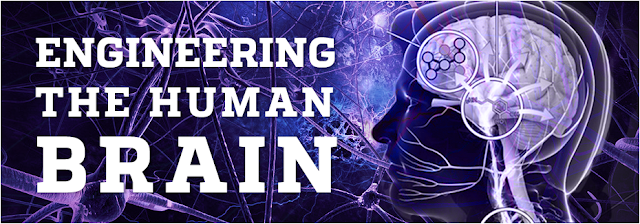Neural Engineering
WHAT IS NEURAL ENGINEERING ?
- Neural engineers are interested in understanding, interfacing with and manipulating the nervous system.
- Computational neuroscientists are creating computer models of neural systems down to the level of single neurons.
- Scientists are also exploring how neurons communicate with one another by taking recordings from actual neurons and having those recordings “interact” with recordings from other neurons.
- Using quantitative techniques, the nature of these communications are being measured and analyzed.
- One benefit of understanding this communication is to provide new ways to interface between neural tissue and man made technologies.
- This is known as brain-machine interfacing.
The Bionic Arm
- One of the most striking examples of neural engineering—specifically brain-machine interfaces—is the bionic arm.
- The DEKA Arm, for example, is currently in clinical trials at the VA.
- With hundreds of US soldiers coming home from Iraq and Afghanistan having had their arms amputated, the VA wanted to provide an artificial limb far more advanced than the basic hook used since World War II.
- DARPA (the Defense Advanced Research Projects Agency) challenged Segway inventor, Dean Kamen, to create an arm that would allow amputees to pick up a raisin or grape and know the difference without looking at it.
- The hand could be no larger than an average human hand and weigh no more than nine pounds.
- The DEKA Arm was developed by a team of over 300 scientists—comprised of engineers, neuroscientists and psychologists—from DARPA and Kamen’s DEKA Research and Development Corporation.
- Control of the fully functioning hand is directed by a patient’s nervous system since the nerves that come from the spinal cord are still available in the shoulder.
- As an amputee simply thinks about moving their missing hand, the brain fires electrical impulses that are detected by electrodes in the prosthesis.
- So there is no real learning curve for the amputee. Additional control over the arm is generated by pressing buttons built into the patient’s shoes.
- Beyond control of the arm and hand, there was still the grape vs. raisin challenge to conquer.
- The resulting neural interface had to account for position, touch and pressure, with haptic perception (see Biorobotics) achieved using sensors that vibrate according to the intensity of the grip to provide cognitive feedback.
- So the DEKA Arm both recognizes signals from the brain (efferent) and relays signals back to the brain (afferent).
Disrupting Neurocircuitry
- By understanding how neurons work, biomedical engineers specializing in neural engineering can look for ways to either stimulate or disrupt this neurocircuitry.
- Implantable devices similar to the pacemakers used in the cardiac setting (see Cardiopulmonary Systems Engineering) could be used to control nervous system disorders such as Parkinson’s disease, depression and epilepsy.
- California-based NeuroPace, Inc., is currently in clinical trials with their responsive neurostimulation (RNS®) system, which monitors and interrupts abnormal electrical activity in the brain before seizures occur.
- If we think of nerves as wires, these wires—or neurocircuits—can either be stimulated or blocked.
- In the not-too-distant future, high frequency electrical stimulation could be used on peripheral nerves in the arms and legs to selectively block some communication—pain, for example—without interfering with other communication.
- The ability to give highly localized and reversible anesthesia would be one application of this technology. Another is bladder control. Most bladder control problems are actually the result of the inability to control the neurons that indicate to a person whether they need to urinate.
- High frequency electrical stimulation via an external device could be used to help coordinate activities that the body can no longer control; especially useful for those who are paralyzed.
Visual Prostheses
- An artificial retina could soon become reality as many groups are developing devices to replace damaged retinas.
- A consortium of researchers in Australia, for example, are working on bionic vision technologies to restore sight to people with degenerative vision loss due to either retinitis pigmentosa or age-related macular degeneration. In both conditions, there is a problem in the part of the eye that senses light but the neural circuitry and visual processing ability of the brain is still intact.
- Using a camera attached to a pair of glasses, signals are transmitted to a microchip implanted in the retina.
- From here, small electrical currents are sent to surviving neurons in the brain.
- Current technology limits the number of implanted electrodes to about 100, so the resolution captured by the camera is processed and reduced to create rudimentary images.
- But these images can make a world of difference to someone who otherwise cannot see.
- Neural engineering incorporates a diverse array of disciplines, including neuroscience, mathematics, engineering, biophysics, computer science and psychology.
- This important work is providing new insights into our understanding of dementia, Parkinson’s, brain injury, strokes and other neurologic deficits.

Comments
Post a Comment